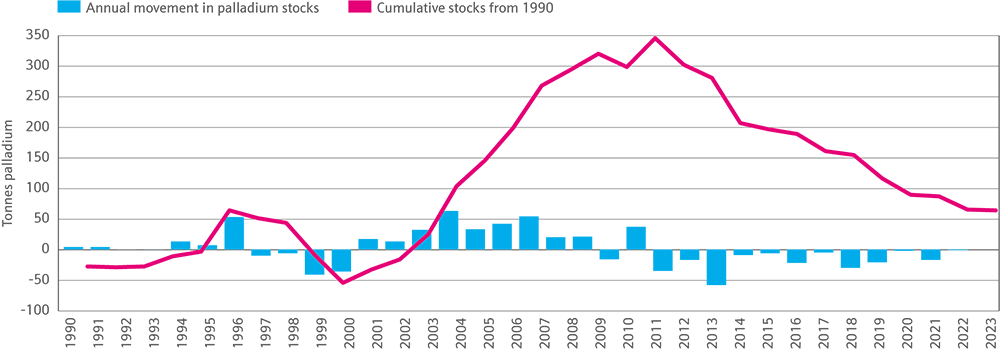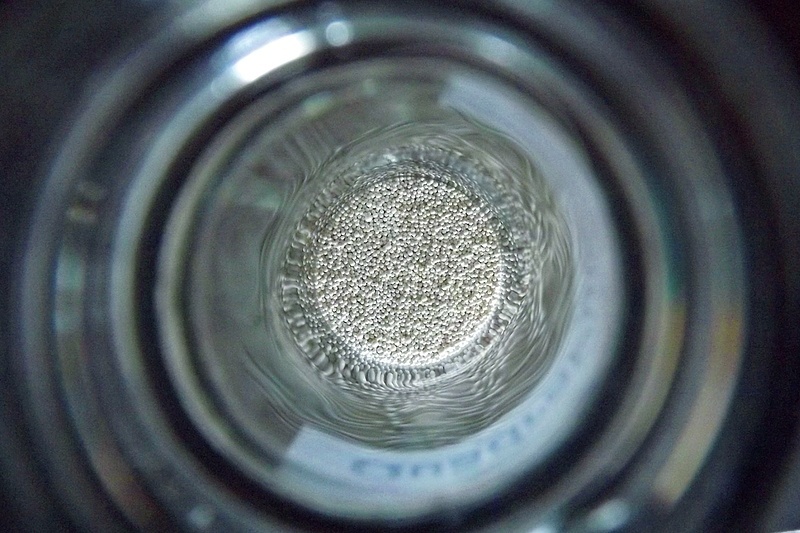In any given year, the total PGM demand can be different from total PGM market supply (from primary metal and open-loop recycling) so PGM markets often see annual surpluses or deficits, with stocks playing a balancing role.
PGM availability considers not only supply, but any metal held in stock, or metal held by users that could be released to the market. These PGM stocks can make up for a shortfall in market supply and come in two forms – market stocks and producer stocks.
Producer stocks, held by miners, and market stocks held by fabricators, dealers, banks and depositories around the world are relatively liquid. They are readily available to the market as the metal has is either not in industrial use, has not been purchased or has been bought purely for investment purposes.
Producer stocks only count as supply to the market when sold by the miners. Whereas market stocks have already been counted as supply, so any movement in these is not counted as fresh supply.
Traditionally, producer and market stocks of platinum and palladium have been held in ingot form in either London or Zurich. Although the precise amount of these stocks is unknown it is possible to track the flow of platinum and palladium into and out of these locations.
Trade data over the past few years has shown a significant drawdown in palladium stocks that coincided with a palladium annual supply deficit period, suggesting that above ground stocks have been used to balance the shortfall. Rapid demand in China for platinum in recent years has seen a similar outflow.
There are fewer liquid stocks of rhodium, ruthenium and iridium which are more likely to sit in producer vaults.

Metal in service stocks
These stocks are clearly not available to the market today and are retained within the closed loop. But requirements change over time, due to technological innovation, evolving consumer needs and industrial changes. This will certainly be true as the energy transition progresses.
As well as considering the evolution of mining and recycling, future PGM requirements and how they may be met should consider the metal currently in service and how this too might evolve. For example, will some of the platinum inventory currently being used in petroleum refineries to produce high-octane gasoline one day be released and find its way onto fuel cell vehicles?
Secondary supplies and recycling
Learn more about the importance of secondary supplies and recycling
Read More

